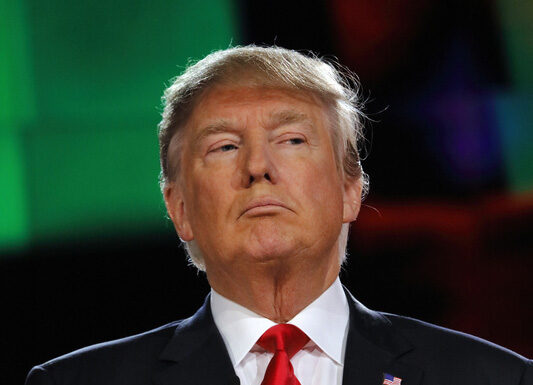The Department of Justice argued Tuesday, March 18, 2025, that President Donald Trump would be within his constitutional authority to fire all agency chiefs who are women or over the age of 40, a claim that raised eyebrows among judges during an appeals court hearing.
The startling assertion came during oral arguments before the D.C. Circuit Court of Appeals regarding the Trump administration’s firing of two board members from independent federal agencies earlier this year.
Eric McArthur, a deputy assistant attorney general representing the administration, made the statement in response to a hypothetical scenario posed by Judge Karen Henderson. She asked whether the president could decide not to “appoint or allow to remain in office any female heads of agencies or any heads over 40 years old.”
McArthur responded that he believed such actions would fall within the president’s constitutional authority under removal power, while acknowledging there might be separate questions about potential violations of other constitutional provisions.
Before McArthur could elaborate further, Judge Justin Walker interjected, suggesting he was “not sure” the DOJ “would have to go there,” and referenced potential protections under the 14th Amendment.
The exchange continued with Judge Patricia Millett pressing the issue, asking specifically about the age-based removal scenario: “What about the over 40 part? All you need is a rational basis under the Constitution. Is ‘I desire to exercise my removal power’ a rational basis?”
McArthur suggested it could indeed constitute a rational basis, before cautioning that he didn’t want to overreach on sensitive questions. He explained that such departmental decisions were made at the highest levels, involving the acting solicitor general, and he was reluctant to get ahead of either the president or the acting solicitor general on these matters.
The case centers on President Trump’s January and February firings of Gwynne Wilcox, a member of the National Labor Relations Board (NLRB), and Cathy Harris, a member of the Merit Systems Protection Board (MSPB). Both officials were nominated by former President Joe Biden, with Harris appointed to the MSPB in 2021 and Wilcox appointed to a second five-year term at the NLRB in 2023.
The NLRB and MSPB serve as watchdog agencies designed to protect federal merit systems from prohibited personnel practices and workers from unfair labor practices, respectively. Notably, Wilcox was the first Black woman to serve on the NLRB.
Two separate district court judges have already ruled against the administration in these cases. On March 4, U.S. District Judge Rudolph Contreras ordered Harris reinstated to her position, noting that the president “provided no reason for Harris’s termination” and emphasizing that MSPB members can only be removed for “inefficiency, neglect of duty, or malfeasance.”
Two days later, U.S. District Judge Beryl Howell similarly ordered Wilcox’s reinstatement, ruling that the president does not have the authority to terminate NLRB board members at will. The Trump administration has appealed both rulings.
McArthur argued before the appeals court that both Wilcox and Harris were agency heads answering only to the president, suggesting this granted the president broad authority to remove them.
The DOJ’s position appears to be part of a larger effort by the Trump administration to challenge a 90-year-old Supreme Court precedent established in Humphrey’s Executor v. U.S., which limits presidential power to arbitrarily fire heads of independent agencies. If successful, this challenge could significantly expand executive authority over federal agencies that were designed to operate with some independence from presidential control.
The administration has cited recent Supreme Court rulings that have narrowed the scope of Humphrey’s Executor, arguing that these decisions call into question the logic behind the 1935 ruling that upheld removal protections for independent agencies.
However, the three-judge panel appeared skeptical of the DOJ’s arguments. The judges noted that while recent Supreme Court decisions may have narrowed Humphrey’s Executor, they have not overturned it, and lower courts remain bound by this precedent.
The broader legal challenge comes amid a series of executive orders issued by the Trump administration that seek to assert greater White House control over independent federal regulatory agencies. Legal experts suggest that if the administration’s position prevails, it could dramatically reshape the federal government by giving the president unprecedented power to remove officials across independent agencies, potentially undermining their intended independence from political influence.
The outcome of these cases could have far-reaching implications for the balance of power between the president and independent federal agencies. If the appeals court rules in favor of the administration, the cases are likely to eventually reach the Supreme Court, which would have the authority to reconsider or potentially overturn its own precedent in Humphrey’s Executor.
For now, the three-judge panel’s evident skepticism suggests the administration may face an uphill battle in its quest to expand presidential removal powers, at least at the appeals court level.








